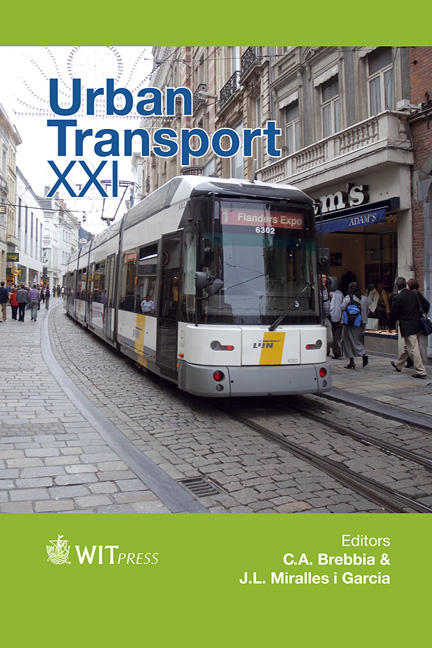Modelling Signal Platoon Patterns By Approach Lane Use And Movement Class
Price
Free (open access)
Transaction
Volume
146
Pages
12
Page Range
521 - 532
Published
2015
Size
741 kb
Paper DOI
10.2495/UT150421
Copyright
WIT Press
Author(s)
R. Akçelik
Abstract
A lane-based signal platoon progression model has been developed for estimating performance measures as a function of signal offsets, geometric design and flow conditions. This is part of a lane-based network model that involves the blockage of upstream intersection lanes by downstream queues (backward spread of congestion) and a capacity constraint applied to oversaturated upstream intersections. The model takes into account midblock lane changes that apply to signal platoon patterns. This is particularly important in evaluating closely-spaced intersections with high demand flows where vehicles have limited opportunities for lane changes between intersections. The modelling of signal platoon patterns is further enhanced by assigning two types of movements negotiating the network to special movement classes. These are the through movements at external approaches which become turning movements at downstream internal approaches, and the dogleg movements at staggered T intersections. These movements can be assigned to separate lanes and separate signal phases, and their second-by-second platoon patterns can be tracked through the network separately. This improves the quality of signal platoon modelling and is expected to produce better results in assessing signal coordination quality and optimising signal offsets. The use of special movement classes also helps to estimate unequal lane use cases at external approaches of a paired intersection system, a factor which also affects signal platoon patterns. A staggered T-intersection example is presented to demonstrate important aspects of modelling signal platoon patterns by approach lane use and movement class.
Keywords
SIDRA INTERSECTION, traffic signals, intersection, network, signal coordination, movement classes, congestion, queue spillback, delay, queue, stops





